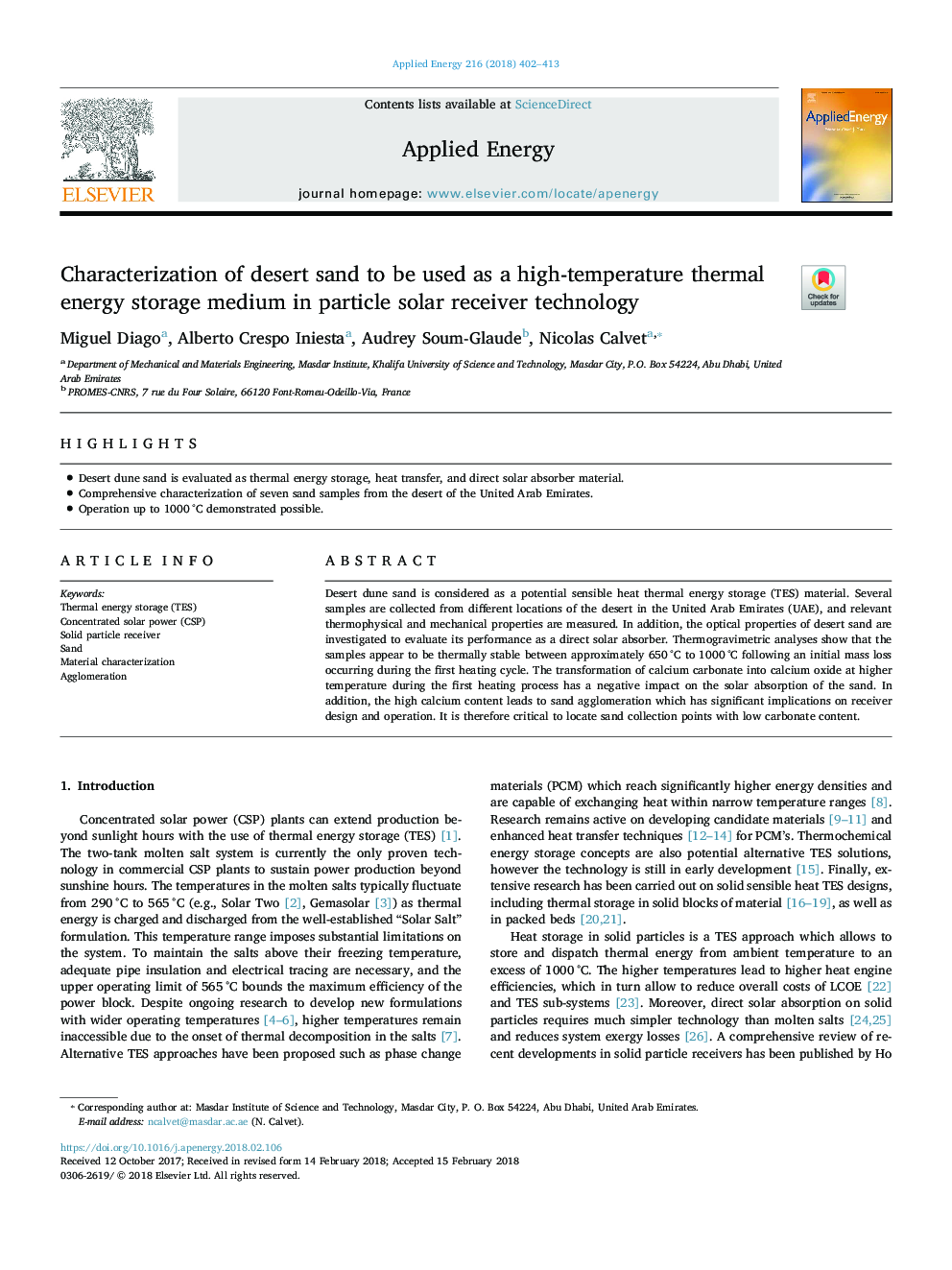| Article ID | Journal | Published Year | Pages | File Type |
|---|---|---|---|---|
| 6680575 | Applied Energy | 2018 | 12 Pages |
Abstract
Desert dune sand is considered as a potential sensible heat thermal energy storage (TES) material. Several samples are collected from different locations of the desert in the United Arab Emirates (UAE), and relevant thermophysical and mechanical properties are measured. In addition, the optical properties of desert sand are investigated to evaluate its performance as a direct solar absorber. Thermogravimetric analyses show that the samples appear to be thermally stable between approximately 650â¯Â°C to 1000â¯Â°C following an initial mass loss occurring during the first heating cycle. The transformation of calcium carbonate into calcium oxide at higher temperature during the first heating process has a negative impact on the solar absorption of the sand. In addition, the high calcium content leads to sand agglomeration which has significant implications on receiver design and operation. It is therefore critical to locate sand collection points with low carbonate content.
Keywords
Related Topics
Physical Sciences and Engineering
Energy
Energy Engineering and Power Technology
Authors
Miguel Diago, Alberto Crespo Iniesta, Audrey Soum-Glaude, Nicolas Calvet,
